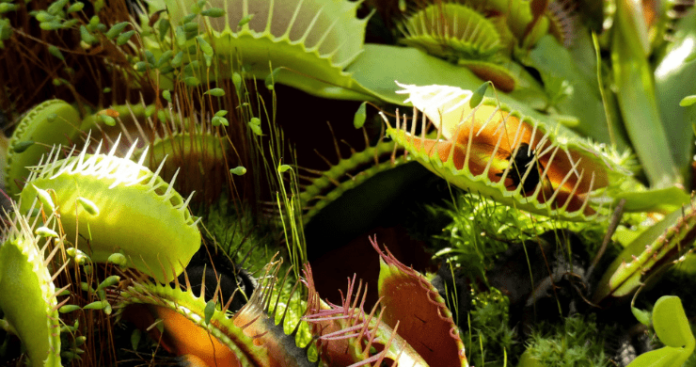Carnivorous plants fascinate with how they lure, catch, kill and digest insects. There are more than 720 species of carnivorous plants, many with astounding adaptations to inhospitable habitats. Popular carnivorous plants by genera include Byblis (rainbow plant), Cephalotus (Australian pitcher plant), Darlingtonia (cobra lily), Dionaea (Venus flytrap), Drosera (sundews), Nepenthes (tropical pitcher plants), Pinguicula (butterworts), Sarracenia (American pitcher plants) and Utricularia (bladderworts). With this kind of variety, there is no one way to grow carnivorous plants, but here are some general tips to get you started:
Light. Most carnivorous plants prefer bright light, and many, such as Sarracenia spp., are best with direct sunlight. Flourescent or other cool temperature grow lights can be used for indoor cultivation of smaller species. A terrarium of smaller carnivorous plants under such lights can make a great starter set-up.
Humidity. Almost all carnivorous plants require high humidity. An indoor terrarium or an outdoor bog garden in humid regions will meet this requirement.
Water. Do not use tap water or mineral water on carnivorous plants. Rainwater, melted snow or distilled water are ideal. Most carnivorous plants require moist to wet soil in the warmer months and less moisture in winter.
Soils. Garden soil is not suitable for carnivorous plants. The preferred media for most are live sphagnum moss, dried long-fiber sphagnum moss or a mix of about three parts peat moss to one part clean, sharp sand. Nepenthes prefer a more “open” mix, such as long-fiber sphagnum mixed with horticultural charcoal, perlite, vermiculite or other porous aggregate.
Temperature. Temperature requirements vary with specis and some require a distinct cool dormancy period.
Feeding. When insects are not available, a one-quarter strength organic fertilizer will benefit plants when actively growing, especially Nepenthes. Do not feed any with actual meat, as they are incapable of digesting complex proteins!



